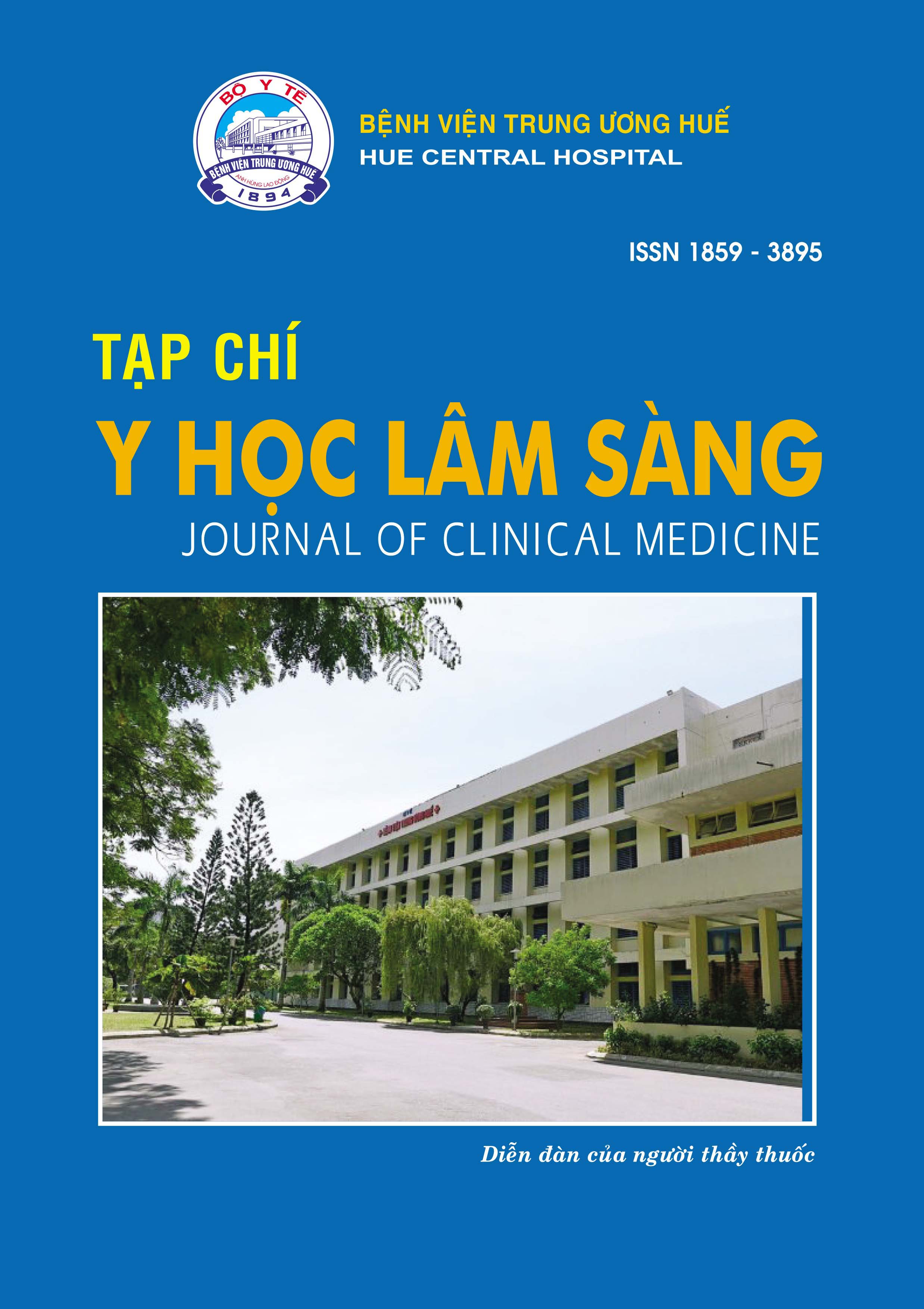Abstract
Background : Indication for treatment of intermediate coronary artery lesions is wavering. Worldwide studies showed the role of FFR in guiding the treatment for these cases.
Objective : Studying the outcomes of FFR-guided PCI in intermediate coronary artery lesions. Method:Cohort study with comparative analysis of 12-month MACE between two groups : Medical treatment with FFR ≥ 0.8 and PCI with FFR < 0.8.
Results : 39 patients with FFR < 0.8 (57.14%) was treated by PCI and 30 patients with FFR ≥ 0.8 treated by medical therapy. The percentage stenotic diameter cut-off was >55.62% on QCA with Sp 60% and Se 75%. There was no significant difference in MACE between two groups after 12-month follow-up.
Conclusion: FFR has important role in guiding treatment for intermediate coronary artery lesions.
References
Aijaz B, Bittner V. (2012), “Coronary Heart Diseas: Risk, cardiology illustration”, Cardiology An Illustrated Textbook, volume 1, pp.829 - 836.
Bech GJ, De Bruyne B, Pijls NH, et al.(2001), “Fractional flow reserve to determine the appropriateness of angioplasty in moderate coronary stenosis: a randomized trial”, Circulation, 103, pp.2928-34.
Ben-Dor I et al.(2012), “Intravascular ultrasound lumen area parameters for assessment of physiological ischemia by fractional flow reserve in intermediate coronary artery stenosis”, Cardiovascular Revascularization Medicine, 13 (3), pp. 177-182
De Bruyne B, Pijls NHJ, et al.(2012), “Fractional flow reserve-guided PCI versus medical therapy in stable coronary disease”, N Engl J Med , 367, pp:991-1001.
Huỳnh Trung Cang (2014), “ Nghiên cứu ứng dụng phân suất dự trữ lưu lượng động mạch vành trong can thiệp động mạch vành qua da”, Luận án Tiến sĩ Y học, ĐH Y Dược Thành phố Hồ Chí Minh.
Iguchi T et al. (2013), “Impact of lesion length on functional significance in intermediate coronary lesions”, Clin Cardiol, 36(3), pp.172-177.
Ngô Minh Hùng (2016), “Nghiên cứu hẹp động mạch vành mức độ trung gian bằng siêu âm nội mạch và phân suất dự trữ lưu lượng vành ở bệnh nhân bệnh mạch vành mạn tính”, Luận án tiến sĩ Y học, Đại học Y Dược Huế.
Report From the American Heart Association”, Circulation, 136 (9), pp.1459-1461.
Smits PC et al. (2017), “Fractional Flow Reserve–Guided Multivessel Angioplasty in Myocardial Infarction”, N Engl J Med, 376, pp.234-1244.
Sun LR el al. (2015), “Factors influencing the functional significance in intermediate coronary stenosis”, J Geriatr Cardiol, 12(2), pp.107–112
Tonino PA, De Bruyne B, Pijls NH, et al. (2009), “Fractional flow reserve versus angiography for guiding percutaneous coronary intervention”, N Engl J Med, 360, pp.213–24.
Toth G et al. (2014), “Evolving concepts of angiogram: fractional flow reserve discordances in 4000 coronary stenoses”, Eur Heart J, 35(40), pp. 2831-2838.
WHO (2000), “The Asia Pacific perspective: Redefining obesity and its treatment”, WHO edition.
Phạm Mạnh Hùng, Nguyễn Ngọc Quang. (2014 ). “ Nghiên cứu ứng dụng kỹ thuật đo áp lực trong lòng động mạch vành và dự trữ dòng chảy mạch vành bằng dây dẫn áp lực (Pressure Wire)”. Tạp chí Tim mạch học Việt Nam, Số 68, 2014.
Panagiotis X et al (2018). “Five-year outcome with PCI guided by fractional flow reserve”, NEJM. Online published.

This work is licensed under a Creative Commons Attribution-NonCommercial-NoDerivatives 4.0 International License.
Copyright (c) 2025 Journal of Clinical Medicine Hue Central Hospital

